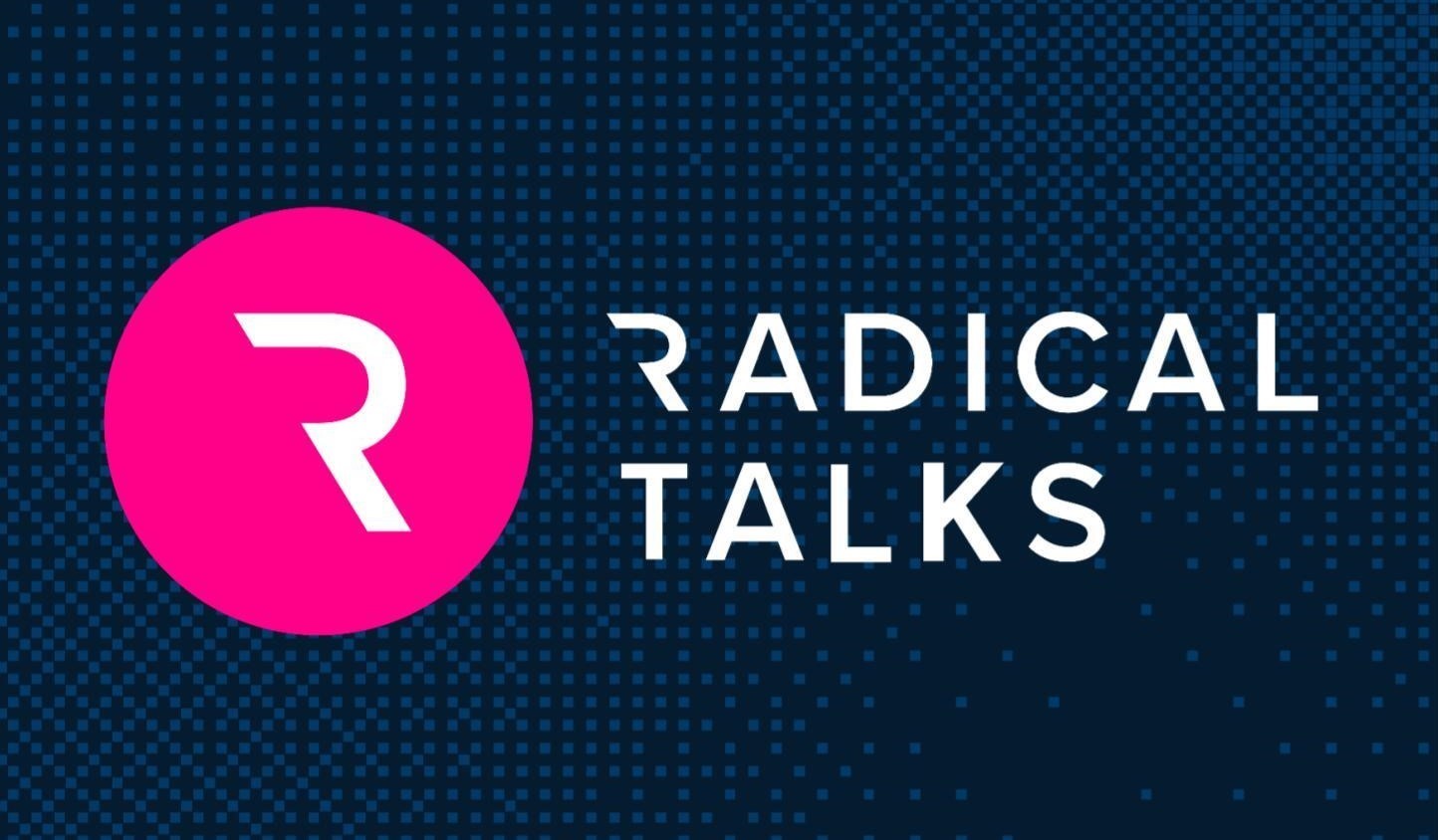The following post is based on the latest Radical Talks episode with host Molly Welch, Partner at Radical Ventures, and featuring Ted Mabrey, Head of Palantir Commercial. Listen to the podcast on Spotify, Apple Podcasts, or YouTube.
In today’s AI-driven enterprise landscape, few companies have charted as distinctive a path as Palantir Technologies. Once dismissed as an outlier for its unconventional approach to building software, the company has emerged as a $450 billion market cap public company with a clear vision of how AI will transform enterprise operations. What makes Palantir’s story particularly compelling is how the company’s non-traditional culture and organization have become strategic advantages in the AI era.
Ted Mabrey, Head of Palantir Commercial and a 15-year veteran at the company, has witnessed this evolution firsthand. From the company’s early days focused on national security applications to its current AI platform powering Fortune 500 companies, Palantir has maintained a consistent belief in technology’s transformative potential while defying Silicon Valley’s conventional wisdom.
The Product Evolution: From Government to Enterprise
Palantir’s journey began with Gotham, a platform developed for defense and intelligence applications after 9/11. “What we learned from our national security work,” Mabrey explains, “was the importance of being directly accountable for real-world outcomes.” This approach, where technology vendors take responsibility for mission success rather than just delivering software, became a significant competitive advantage when Palantir entered commercial markets. Most enterprises weren’t used to vendors who truly aligned themselves with business outcomes.
Central to this outcome-focused approach is what Palantir calls “ontology” – creating living, breathing digital representations of real-world operations. “If you’re going to sign up for maximizing the real-world outcomes of technology, you have to get as close to a live facility of what’s going on in the world,” he notes. This foundational concept evolved through Palantir’s product journey: first powering Gotham for defense applications, then adapting into Foundry for commercial environments, and now serving as the backbone for AIP, the company’s enterprise AI offering.
This technological continuity across sectors has created unique strategic advantages. As Mabrey observes, “You have a very different distribution of the future across government and commercial, and at any given point in time, one is going to be ahead of the other.” The Department of Defense’s early adoption of high-stakes AI, for example, allowed Palantir to develop infrastructure and expertise years before enterprise demand surged — positioning the company to quickly capitalize on the current AI revolution.
The Belief-Driven Culture
Underlying Palantir’s product evolution is a distinctive culture that sets it apart from typical Silicon Valley companies. “What defines our culture is this sense of purpose,” Mabrey explains. “When I first joined, I was coming from financial services where everything was about climbing a ladder—your next promotion, your next bonus. Meeting people at Palantir who were building something and didn’t think about that stuff at all was quite striking.”
This purpose-oriented approach has three main components: first, a conviction that technology should meaningfully impact important societal challenges rather than just generate profits. Second, a fundamental optimism about technology’s potential to solve complex problems. And third, a space for independent thinking and rigorous debate within the broader mission.
As CEO Alex Karp notes in Palantir’s S-1 filing, “The culture of our company is more than a mere byproduct of the people that we choose to hire. Our culture and means of organizing ourselves are preconditions for the creation of effective software.” This philosophy directly informs how Palantir structures its organization and approaches talent development.
The Unconventional Organization
Translating this belief-driven culture into organizational structure, Palantir deliberately rejects traditional corporate hierarchies. The company operates with fluid titles, ambiguous reporting lines, and an emphasis on individual agency.
“We have about 4,000 people. For a company of our size, that is bananas,” Mabrey notes. “We’re also not intending to grow that number of people.” Palantir’s lean approach prioritizes innovation over calcification around existing products.
This organizational philosophy enables exceptional individuals rather than implementing management systems that might constrain them. It creates what Mabrey calls “a series of contradictions”, where the company demands perfect execution in high-stakes environments while preserving space for creativity and innovation.
Such a structure demands extraordinary talent. As Karp has stated, “Palantir is the single most important organizer of talent in the Western world, the most important degree that you could possibly have.” This high bar has fostered the notable “Palantir Mafia” of alumni founders and investors.
The FDE Model and Silicon Valley Mimicry
Perhaps Palantir’s most visible organizational innovation is the Forward Deployed Engineer (FDE) model, now widely adopted across Silicon Valley. The concept originated from Karp’s observations of fine French restaurants, where wait staff function as extensions of the kitchen — deeply understanding both sides and translating between them to ensure success.
After years of being considered unconventional, Mabrey notes the irony in seeing this approach become mainstream. “For probably 15 years, this thing I’m doing is completely derided, and now everyone is doing it,” he observes. While the model is increasingly copied, Mabrey suggests the value isn’t in the structure itself but in the principles behind it.
“If you want to learn from Palantir, learn about the process that led to the materialization,” he advises. The point isn’t to copy a formula but to develop the exquisite taste that drives genuine innovation.
The AI Inflection Point
Palantir’s decade-plus investment in ontology positioned the company uniquely for the AI revolution. The ontology concept — creating structured, interconnected digital models of real-world operations — provided precisely the framework needed to deploy AI effectively in enterprise contexts. While most companies needed to build new data architectures from scratch to support AI applications, Palantir already had the fundamental components in place.
“All of that infrastructure that is required to enable human thought, and maximize automations of traditional software, then building in another primitive into that system. We’re just way ahead on the infrastructure,” Mabrey explains.
To capitalize on this market opportunity and leverage their technical advantages, Palantir launched AIP (Artificial Intelligence Platform) along with innovative “boot camp” implementations where enterprise teams build working AI applications in just 24 hours. These boot camps bring customers’ domain experts together with Palantir engineers to rapidly develop AI solutions on the company’s platform. “When you can deliver at pace, it starts to unlock non-technical people who really understand their domain to demand more from technology,” Mabrey explains. This approach contrasts sharply with competitors who “extract money without products and filibuster customers” through lengthy, unproductive pilots that often never reach production.
The Cybernetic Enterprise Vision
Looking forward, Mabrey articulates a vision of the “cybernetic enterprise:” organizations where technology, human intelligence, and AI are seamlessly integrated to achieve mission objectives. He contrasts this with the “software industrial complex,” where technology has increased market capitalization for vendors without substantially improving real-world outcomes.
“Software ate the world. Total factor productivity is below trend line. Life expectancy hasn’t gone up. Real wages haven’t gone up. Like, what’s going on?” Mabrey questions. His critique targets the disconnect between technological advancement and actual societal progress.
The cybernetic enterprise concept draws inspiration from consumer internet companies, where product, data, and intelligence create virtuous cycles. “Every time you use Google search, it improves page rank. Netflix algorithms, news feeds, TikTok reels, they are cybernetic enterprises,” Mabrey notes. His vision extends this concept to complex domains like manufacturing, supply chains, and regulatory compliance.
Companies that successfully implement this vision will capture “all of the economic surplus” from advances in AI. “I suspect they will be as asymmetrically successful as the dominant consumer internet giants, but in every industry under the sun,” he predicts.
Not All Who Wander Are Lost
Reflecting on Palantir’s journey from derided outsider to industry titan, Mabrey finds resonance in the Tolkien line, “Not all who wander are lost.” The quote captures the company’s willingness to follow its own path despite external criticism.
“Everything meaningful that you really believe in, your method of delivering this exquisite excellence in domains that matter to you, has to look like wandering for a while,” Mabrey reflects. This wandering, guided by deep purpose and belief, ultimately created a company that defied conventional wisdom to become one of technology’s most consequential companies.
For those seeking to learn from Palantir’s example, Mabrey offers this advice: “Have the courage to go on your own journey… do something that you care about and see where it goes.”
This post is based on insights from Radical Talks, a podcast from Radical Ventures exploring innovation at the forefront of AI. For more cutting-edge AI discussions, subscribe on Apple Podcasts, Spotify, or YouTube.

